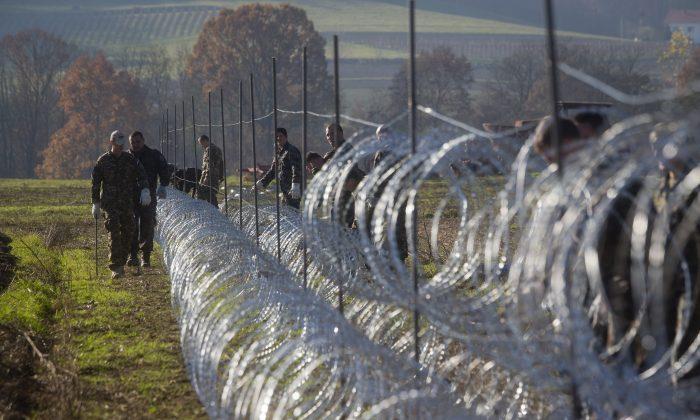VALLETTA, Malta—The European Union pressed African leaders on Wednesday to take back thousands of people who do not qualify for asylum, as overwhelmed Slovenia began building a razor-wire border fence to keep migrants at bay, raising tensions with neighboring Croatia.
Sweden, struggling to manage the influx too, became the latest EU nation to announce the introduction of temporary border controls, as of Thursday.
According to the International Organization for Migration, almost 800,000 people have entered Europe by sea this year. The EU predicts that three million more could arrive by 2017.
The Europeans say most Africans are coming in search of work and should be sent home, but many deliberately arrive without documents and must wait months before they are taken back.
Such centers, “whatever we call them, will become de-facto detention centers,” AU chairwoman Nkosazana Dlamini Zuma said.
She warned that women and children would be in danger if held there, and she also hit out at some European countries that “have taken a fortress approach” to migration.
In Slovenia, meanwhile, tensions mounted after troops began erecting razor-wire along the Sutla River that divides the country from Croatia, and further southwest near the town of Gibina.
Tensions mounted when Croatian authorities said parts of the fence were in disputed territory. AP journalists saw Croatian police demand that Slovenia take down a section of the fence.
Croatian special forces arrived at the Harmica border crossing, while armed Slovenian special police watched from the Slovenian side. A helicopter flew above illuminating the area with a spotlight before the Croatian forces pulled back.
Slovenia denies that any part of the planned 80-kilometer (50 mile) fence is on Croatian soil. Both countries are already locked in an old territorial dispute dating from the breakup of Yugoslavia in the 1990s.
The tiny Alpine state expects some 30,000 new migrants to arrive and fears that if neighboring Austria restricts their entry, the thousands would be too much for it to handle.
“If we don’t act on time,” Prime Minister Miro Cerar said, “this could cause a humanitarian catastrophe on the territory of Slovenia.”
Nearly 170,000 migrants have crossed into Slovenia since mid-October, when Hungary closed its border with Croatia and the flow of desperate people heading to Western Europe was redirected to Slovenia.
In Sweden, Interior Minister Anders Ygeman said border controls will be introduced at 1100 GMT (6 a.m. EST) on Thursday and last until Nov. 21.
He said the move was a way to “bring order” to the Swedish asylum system while sending a signal to the EU.
Sweden says migration authorities are overstretched and nearly 200,000 asylum-seekers are expected this year. Relative to population size—Sweden has 9.7 million people—no other EU country comes close.
It wasn’t immediately clear whether the move would allow Sweden to turn people away at the border. But it would prevent people from staying in the country illegally, or transiting through to reach neighboring Finland and Norway.
Fredrik Bengtsson, spokesman for the Swedish Migration Agency, said the agency is currently picking up people by bus at the border and driving them to its offices, but “once they get there quite a lot don’t enter and get registered but disappear.”
Arriving migrants will now have to decide whether to apply for asylum in Sweden or turn back, Ygeman said. Most migrants come to Sweden by boat from Germany or across the Oresund bridge from Denmark.
In other developments, 14 migrants, including seven children, drowned early Wednesday when their boat sank off Turkey, the state-run news agency reported. Divers were searching for more victims.






Friends Read Free